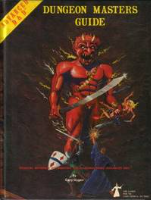Tokens : 280x280 pixels in PNG format, regardless of the "in-game" size of the token. At this image size, the token could be as large as 4x4 squares in-game without any issues, and will support zooming in -- and it will look good on the Marketplace listings page, as well. Do be sure, however, that your tokens are still recognizable/"look good" at smaller sizes (e.g. 70x70 pixels). Note that tokens should "fill" the square without any excess padding, and feature a drop-shadow or other outline to make them easy to distinguish from background elements. For a great example of this in practice Maps : 140x140 pixels per "square" in JPG format. So if the map is intended to be a 20 square x 20 square room, the map image should be 2800x2800 pixels. If your map is going to be larger than 30x30 squares (4200x4200 pixels), you may want to consider offering one "full" map, and then several different "sub-maps" that can be pieced together in the app to make the full map -- this can improve performance for the end-user. In addition note the file size restrictions below. Map Tiles : 140x140 pixels per "square" in JPG format, unless it is an "object" such as furniture or decorations that will sit on top of other tiles, in which case use PNG. Only use PNG when necessary -- it places a much heavier burden on the processing of the end-user's system than JPG. For multi-square (or "room") tiles, you will want to experiment to make sure that any grid lines line up once placed in Roll20. If each of your tiles is only one "square" in-game, then you don't need to worry about this. Note: Map tiles are the hardest assets to create correctly, so for your first set you may want to try and create tokens or full-scale maps. Above are other Roll20 recommendations. If you are thinking of tiles you might consider using this design: <a href="https://wiki.roll20.net/Geomorphic_Map_Tiles" rel="nofollow">https://wiki.roll20.net/Geomorphic_Map_Tiles</a> A few tiles can go a long way and the map set up work is really easy with Roll20 (place, spin and/or flip.)





